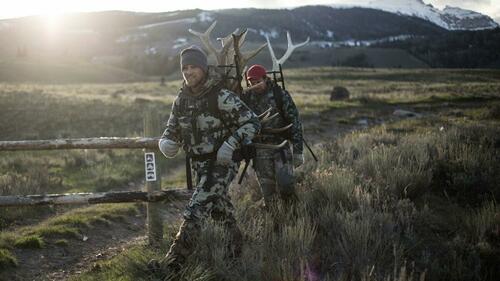“World Cup Of Shed Hunting” Underway In Jackson Hole
Shed hunting season has opened up for Wyoming residents this week, as well as non-residents who must purchase a conservation stamp before collecting shed antlers on designated lands.
The Wall Street Journal describes the mania in the hills around the Bridger-Teton National Forest, near Jackson, Wyoming, as the “World Cup of shed hunting.”
People across the state and from across the country are scouring the hills for freshly dropped antlers that haven’t yet been sun-bleached and are called “brown” or “brown gold” by some antler hunters.
“It’s the adrenaline rush that you get, plus you’re outside, you’re away from people,” said antler hunter John Bishop, adding, “There’s really no worldly obligations anymore at that point. It’s just you and whatever else is out there.”
Earlier this week, Bishop and his group of friends, along with hundreds of other hunters, eagerly awaited the lifting of restrictions on antler hunting in the National Forest.
Scott Turner, another antler hunter, described the opening season in J-Hole as “the Super Bowl” or ” the World Cup of shed hunting.”
“It’s like the ultimate Easter egg hunt meets Spartan race,” Turner said, who has been collecting antlers for nearly three decades.
WSJ pointed out that the popularity of shed hunting has surged in recent years. And perhaps the reason is simple:
“Right now, most people are paying between $15 and $16 a pound for brown elk,” antler buyer Jeremy Barry said. He called freshly dropped antlers that haven’t yet been sun-bleached are called “brown” or “brown gold.”
In addition to fancy antler chandeliers in mountain or lake homes, demand for antlers also comes from those who practice traditional Chinese medicine to treat a variety of diseases, including mammary hyperplasia, mastitis, uterine fibroids, malignant sores, and children’s mumps.
Tyler Durden
Fri, 05/03/2024 – 15:05

